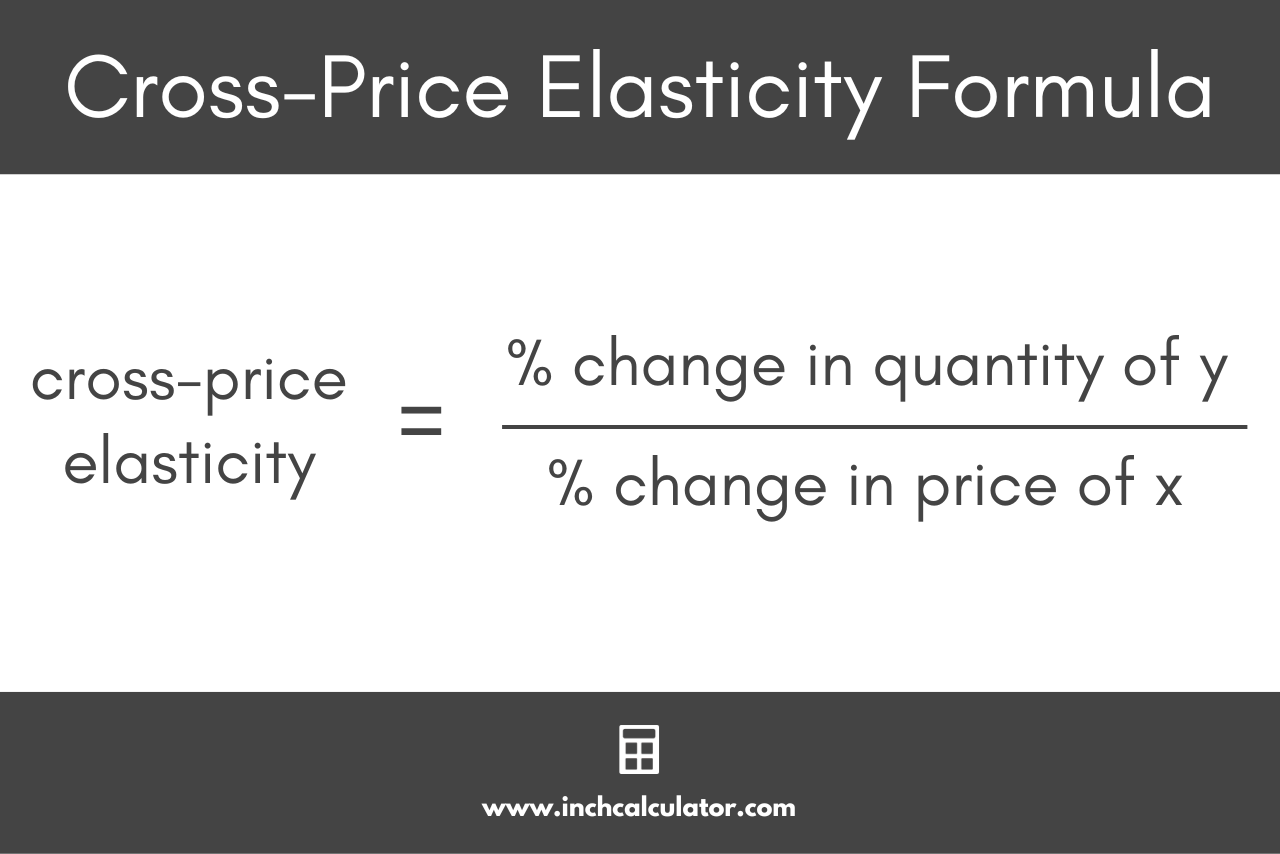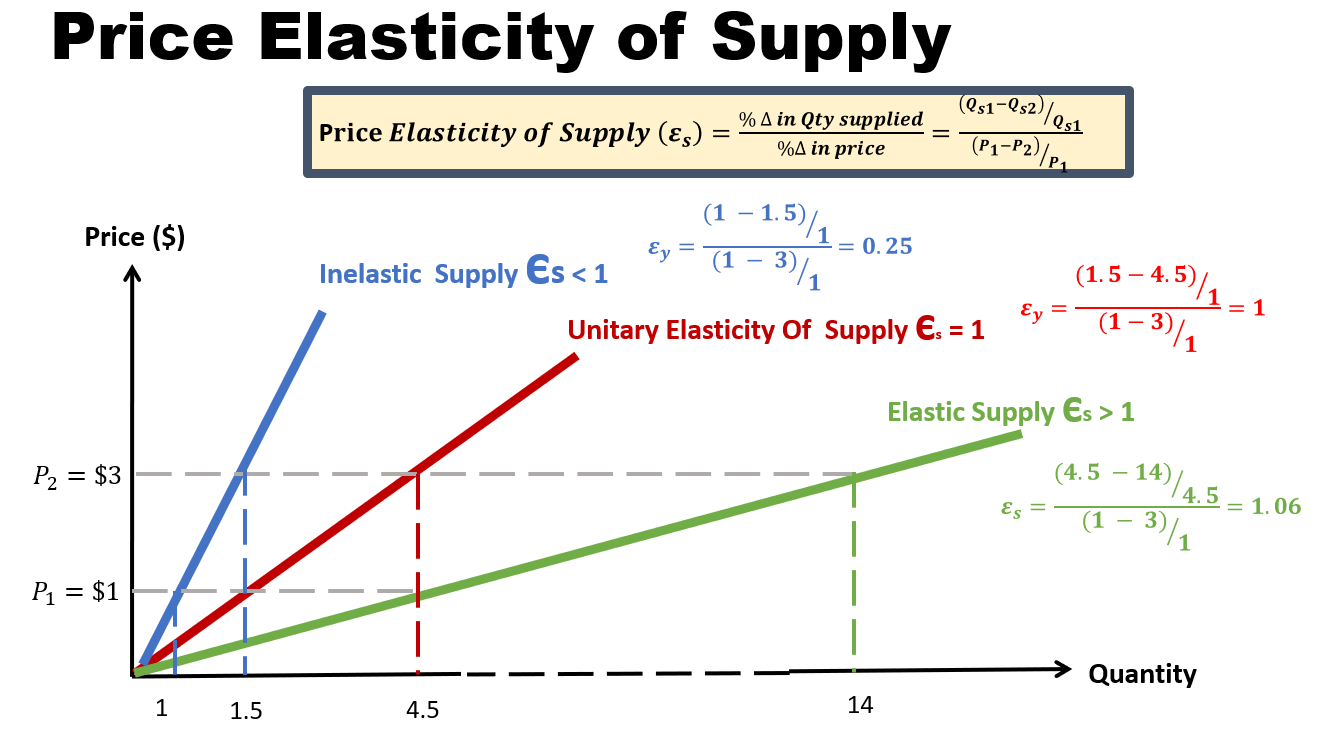
Other Elasticities
There are a few other elasticities, beyond just demand, that are worth knowing.
Cross-price elasticity is between two goods.
Source: Inch Calculator
In this case, y and x are two separate goods. If the cross-price elasticity is positive, the goods are substitutes. Why? Because increasing the price of one good increases the demand for the other good, thereby increasing quantity exchanged. If cross-price elasticity is negative, the goods are complements. That’s because increasing the price of x would actually decrease the demand for y in order to decrease its quantity and make the elasticity negative. If the cross-price elasticity is zero, the two goods are unrelated.
Income elasticity measures the sensitivity of quantity demanded to income changes.
Source: Universal CPA
If income elasticity is positive, an increase in income increases the quantity demanded. Thus, the good is normal. If income elasticity is negative, a decrease in income increases the quantity demanded. Thus, the good is inferior. If income elasticity is zero, the good is a “sticky good,” which just means its quantity demanded is independent of income changes.
Price elasticity of supply is the only main elasticity that doesn’t include some form of demand; it measures how responsive suppliers are to a change in price.
Source: Intelligent Economist
If price elasticity is less than 1, supply is inelastic because quantity supplied doesn’t change much in comparison to the change in price. If greater than 1, supply is elastic because quantity supplied changes drastically compared to the percent change in price. If equal to 1, supply is unit elastic.
Source: Economics Tuition SG
There are a few key determinants. First, availability of inputs: if inputs are difficult to obtain, supply is less elastic because suppliers can’t just responsively ramp up production without the necessary materials. Then there’s marginal cost: if each additional unit is more expensive to produce, supply is more inelastic. The last one is time: like with demand, supply becomes more elastic as time passes.



